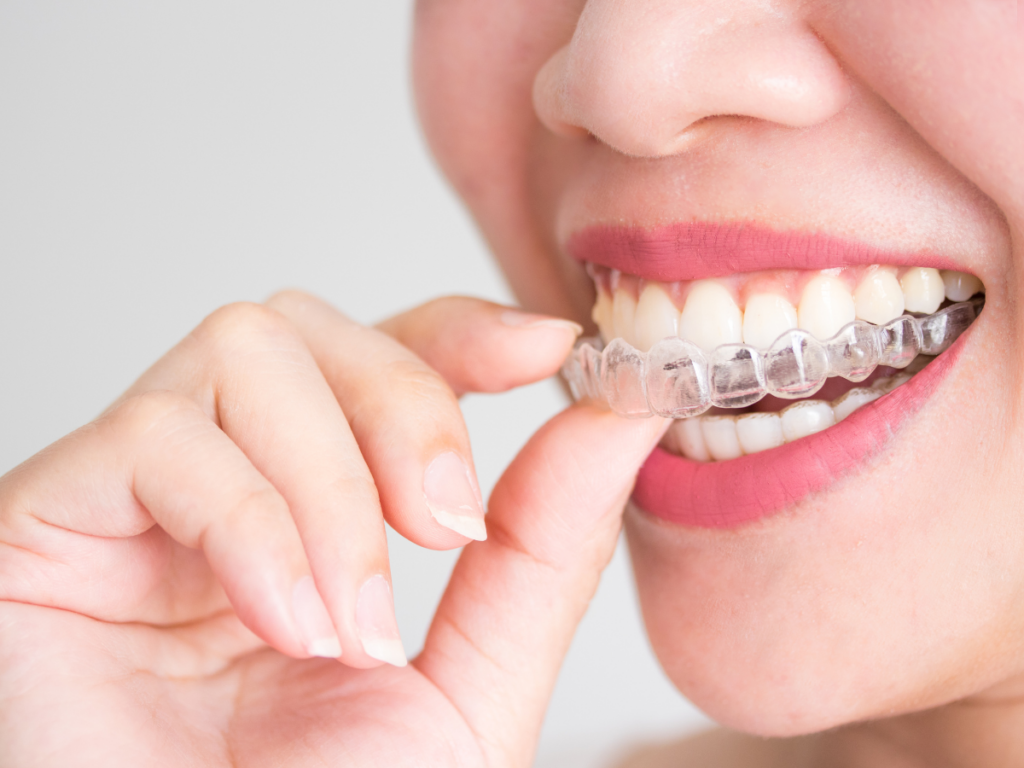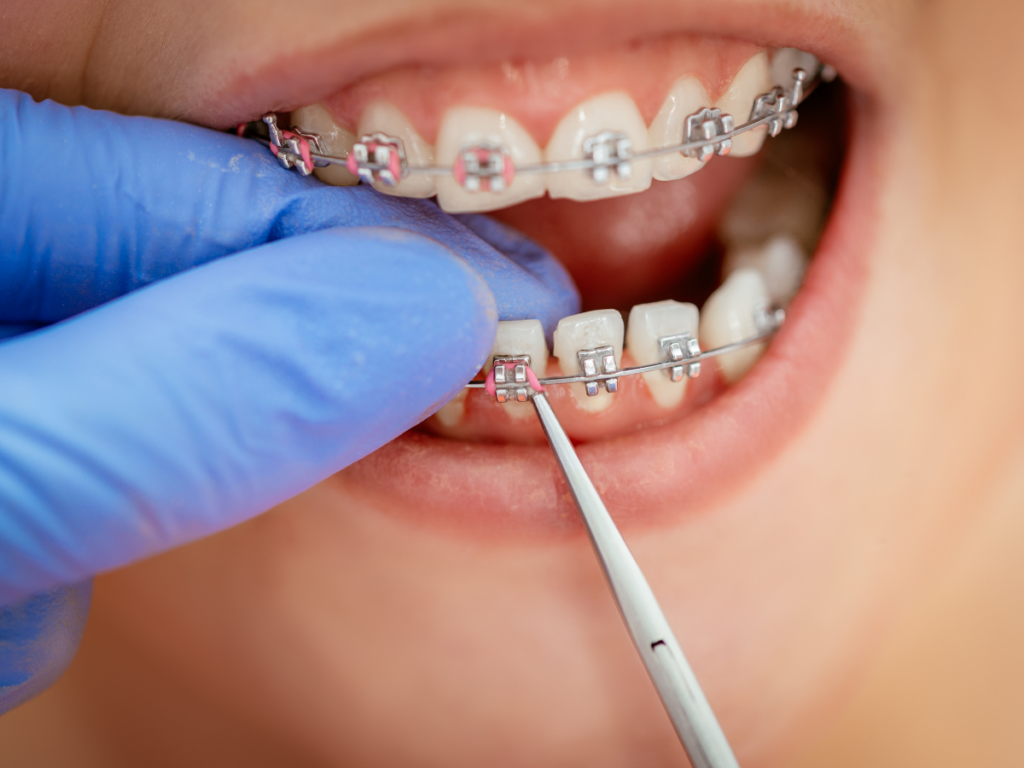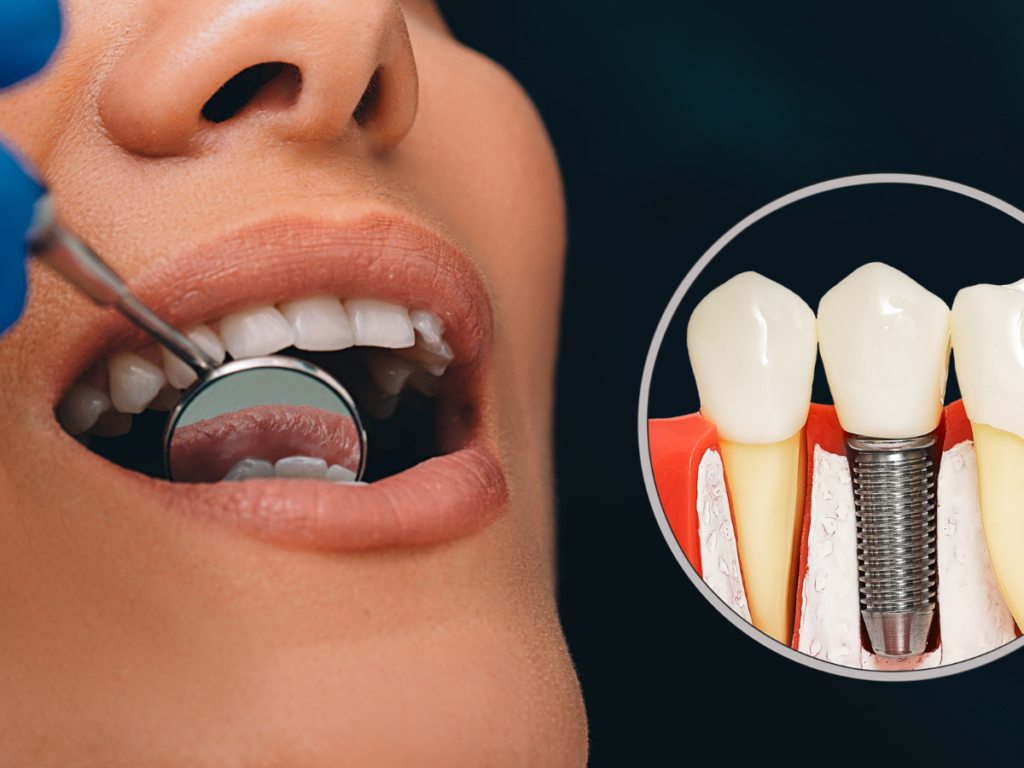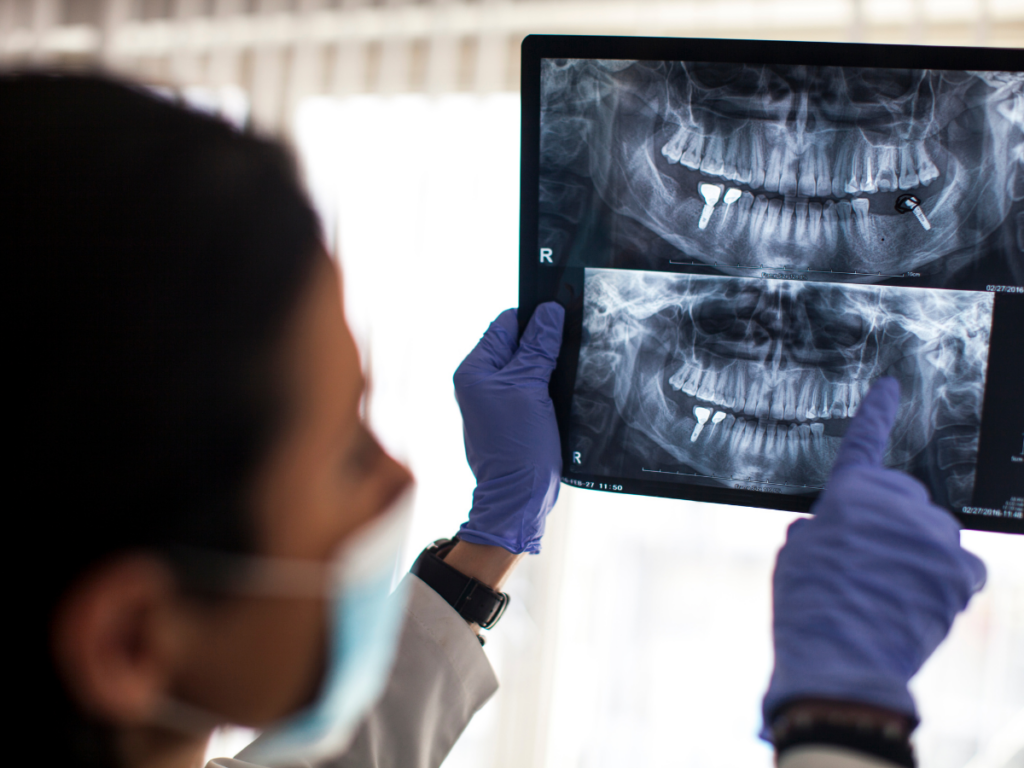While many people understand the importance of maintaining good oral health for a radiant smile, fewer realize that the health of our mouths can profoundly impact the rest of our bodies. One of the revolutionary treatments highlighting this connection is LANAP, or Laser-Assisted New Attachment Procedure. This groundbreaking method, used to combat periodontal disease, has broader implications for overall health. Let's delve into how LANAP can contribute to a healthier you, beyond just your gums.
Studies have long indicated a connection between gum disease and cardiovascular diseases. Inflammation in the gums can lead to bacteria entering the bloodstream, potentially causing inflammation in the blood vessels. This can result in atherosclerosis – a condition where the blood vessels become narrowed due to fatty deposits, increasing the risk of heart attack and stroke.
LANAP, by effectively treating gum disease, helps in reducing the levels of inflammation-causing bacteria in the mouth. This can potentially decrease the risk of cardiovascular complications associated with periodontal disease.
Diabetes and periodontal disease have a complex relationship. On one hand, high blood sugar levels can increase the risk of gum infections. On the other, severe gum disease might make blood sugar harder to control, escalating diabetes complications.
LANAP, by treating periodontal disease, can play a pivotal role in this interplay. Reducing gum infections can help stabilize blood sugar levels, proving beneficial for diabetic patients.
There's evidence to suggest that people with periodontal disease have a higher risk of respiratory infections like pneumonia. This is believed to be due to bacteria from infected gums being inhaled or entering the bloodstream.
By targeting and reducing these harmful bacteria with LANAP, the risk of such respiratory infections may be diminished.
While the primary focus is often on physical health, we shouldn't underestimate the mental health benefits of procedures like LANAP. A healthy mouth can boost self-confidence and self-esteem. Moreover, addressing chronic oral infections can lead to improved sleep and overall well-being, reducing stress and potentially alleviating symptoms of anxiety and depression.
Below is a brief breakdown of quick facts about LANAP.
LANAP is a relatively new procedure and was first introduced in the 1990s
Approximately 2 hours (may vary based on the extent of gum disease)
Minimal; most patients return to their normal routine the next day.
LANAP is not just an advanced treatment for gum disease – it's a testament to the intricate connections between oral health and overall well-being. As research continues to uncover the broad-reaching benefits of procedures like LANAP, it becomes increasingly evident that prioritizing oral health can be a gateway to improving holistic health.
If you're suffering from periodontal issues, considering LANAP might not just transform your oral health but could also be a step towards a healthier, more vibrant you. Always consult with a dental professional to see if LANAP is the right choice for your specific needs.
If you're looking for help with your gum help, check out our Basking Ridge or Montclair locations for LANAP services.
The journey to a perfect smile often involves choosing between Invisalign vs. traditional braces. Both options aim to correct dental misalignments, but they come with their own set of advantages and drawbacks. In this article, we'll delve into the pros and cons of each, helping you make an informed decision for your orthodontic needs.
Invisalign consists of a series of clear, removable aligners custom-made for your teeth. These aligners gradually shift your teeth into their desired positions.
Traditional braces involve metal brackets attached to the teeth, connected by wires and rubber bands. They apply continuous pressure to move teeth over time.

With a system like Invisalign, you get what you put into it. That means consistency and thoughtful effort are required to get the desired results you want:
There are several things to consider when thinking about the cons of traditional style braces:

Choosing between Invisalign and traditional braces is a significant decision that can impact both your oral health and self-confidence. Here are some detailed factors to consider:
One of the first assessments made in the debate between Invisalign vs. traditional braces is the severity of your dental issues:
When making the choice between Invisalign vs. traditional braces, your treatment duration expectations should be top of mind.
Your unique dental needs, lifestyle, budget, and personal preferences will play a crucial role in determining the right orthodontic treatment for you. It's essential to have an open discussion with your orthodontist, ask questions, and weigh the pros and cons before making a final decision.
This expanded section provides a more in-depth analysis of the factors to consider when deciding between Invisalign and traditional braces, helping potential patients make a well-informed choice.
Considering orthodontic treatment? Our team of experts can guide you through the Invisalign and traditional braces decision-making process. Schedule a consultation today!
Gum disease, medically known as periodontitis, has plagued humanity for ages. Traditional treatments often involved invasive surgery and lengthy recovery times. Enter LANAP (Laser-Assisted New Attachment Procedure) – a revolutionary approach that's changing the game in periodontal treatments. In this article, we'll introduce you to the LANAP procedure and its myriad benefits.
LANAP, or Laser-Assisted New Attachment Procedure, is an FDA-approved method for treating gum disease without the need for scalpel or sutures. It employs a specialized PerioLase MVP-7 laser to target and eliminate bacteria causing gum disease, leaving healthy tissues untouched.
The LANAP procedure is a testament to the power of modern dental technology. Here's a step-by-step breakdown:
Minimally Invasive Approach
Traditional gum surgeries often involve incisions and sutures, which can be uncomfortable and intimidating for many patients. LANAP, on the other hand, uses laser technology to target and treat infected areas without the need for cutting or stitching. This minimally invasive approach results in a more comfortable experience during and after the procedure.
Rapid Recovery and Healing
One of the standout benefits of LANAP is the significantly reduced recovery time. While traditional surgeries might require days or even weeks of recovery, most LANAP patients can resume their regular activities within 24 hours. The laser promotes natural healing, reducing post-operative pain and swelling.
Preservation of Healthy Gum Tissue
The precision of the PerioLase MVP-7 laser ensures that only the diseased tissue is targeted and removed. This selective treatment means that a larger portion of the healthy gum tissue remains intact, promoting better overall oral health and a more aesthetically pleasing result.
Reduced Gum Recession
Traditional periodontal surgeries can lead to gum recession, which can affect the appearance of one's smile and increase tooth sensitivity. With LANAP, the risk of gum recession is significantly minimized, ensuring that the gum line remains more consistent post-treatment.
Lowered Risk of Post-Operative Infections
The LANAP procedure inherently sterilizes the treated areas, eliminating harmful bacteria. This sterilization, combined with the absence of open wounds (thanks to the no-cut, no-suture approach), drastically reduces the chances of post-operative infections.
Promotion of Bone Regeneration
An often-overlooked benefit of LANAP is its ability to stimulate the growth of new bone tissue around ailing dental implants or teeth affected by periodontitis. This can be crucial for patients looking to restore the strength and stability of their teeth.
Less Post-Operative Discomfort
Patients who undergo the LANAP procedure often report less pain, swelling, and discomfort compared to those who opt for traditional gum surgery. This can reduce the need for strong painkillers and make the post-operative period more manageable.
Suitable for Medically Compromised Patients
For patients with health concerns like diabetes, heart disease, or hemophilia, traditional surgeries can pose risks. LANAP's non-invasive nature makes it a safer alternative for such individuals, offering effective gum disease treatment without the potential complications of traditional surgery.
If you're suffering from gum disease and are looking for a modern, effective solution, LANAP could be the answer. It's especially beneficial for those who may be apprehensive about traditional surgery or those looking for a quicker recovery.
LANAP is a testament to how technology is revolutionizing dental care. Offering a blend of efficiency, comfort, and effectiveness, it's no wonder that this procedure is fast becoming the preferred choice for both dentists and patients alike in the battle against gum disease.
Concerned about gum disease? Explore the benefits of LANAP with our experts. Schedule a consultation today and take the first step towards healthier gums.
Losing a tooth or several teeth can be a traumatic experience for anyone. In the past, dental bridges or dentures were the common solutions for missing teeth. However, recent advances in dental technology have led to the introduction of mini dental implants.
Mini dental implants (MDIs) are a more modern and attractive option for patients who want to replace missing teeth and restore their smile. This blog post is about everything that you need to know about mini dental implants.
Mini dental implants are small titanium screws that act as artificial tooth roots. These screws are inserted into the jawbone and provide a stable base for dental crowns, bridges, or dentures.
Mini dental implants are called "mini" because they are only about half the size of traditional dental implants.
The process of placing mini dental implants is usually faster and simpler than placing traditional dental implants. Mini dental implants can be inserted into the jawbone without making a large incision, and the recovery time is brief.
Typically, the procedure can be performed in a single visit. However, it is essential to consult a professional dentist to make an informed decision about whether mini dental implants are the best option for your oral health.
Mini dental implants have several advantages over traditional dental implants, including:

Caring for mini dental implants is similar to the care required for natural teeth. You should brush and floss regularly and go for regular dental checkups to maintain optimal oral health. Your dentist may also recommend a specific diet that helps to prevent any damage to the implant or the prosthetic teeth on top of it.
Mini dental implants are suitable for patients who:
There are several factors that determine whether mini dental implants or Traditional dental implants are the best choices for a patient. The type of implant needed and the condition of the jawbone must be carefully evaluated to decide which option is most suitable for each individual case.
Mini dental implants may not be an appropriate treatment option for individuals with weakened jawbones, as they cannot provide the same amount of stability and support that traditional dental implants can.
At the end of the day, it's crucial to consult a professional dentist to determine which option is best for your specific needs. The dentist can evaluate your oral health and make an informed decision about the type of implant that will work best for
Mini dental implants are a game changer in the dental industry. They provide a less-invasive, affordable, and practical solution to missing teeth. Mini dental implants provide a solution that lasts for years and protects the structure of your jawbone.
If you are considering dental implants to restore your smile, visit us at 41 Stonehouse Road in Basking Ridge, NJ.
Dr. Trichas will help you figure out if mini dental implants are the right solution for you. Simply fill out our form here or give us a call!
Dental procedures are evolving rapidly, and one such advanced procedure is dental implant bone grafting. This guide will provide a thorough understanding of this crucial procedure, its need, process, and benefits. Let's delve into the fascinating world of dental science and explore the transformative potential of dental implant bone grafting.
Dental implant bone grafting, a prominent surgical procedure, adds bone tissue to the jaw areas where implants are planned. The core aim of this operation is to regenerate bone tissue, providing a strong and robust foundation for dental implants.
This additional bone can be derived from your body, a donor, or even from synthetic or animal sources. Once the bone graft material is inserted into the jaw, the region is allowed to heal, fusing with the existing bone tissue.
In some cases, bone grafting may be essential to move forward with the dental restoration process. Dental implants are incredibly powerful tools for restoring teeth, but they require a strong base of bone to be securely placed. If the jawbone is not sufficiently dense or has already begun to deteriorate due to periodontal disease, then dental implant bone grafting might be necessary.
By introducing new, healthy tissue to the area, jawbone density and quality can be improved. This helps to ensure that the implant is placed correctly and with greater stability, leading to higher success rates for long-term dental restoration.
Several factors necessitate bone grafting in dental implant treatment:
Gum disease often damages the bone tissue supporting teeth, leading to gum recession and bone loss. If insufficient bone remains in the jaw, dental implant bone grafting is crucial to rebuild the area.
Trauma to the jaw can result in bone loss, making dental implant bone grafting necessary for successful implant placement.
With age, our bones may weaken and thin, a condition that also affects the jaw bone. Increasing the bone density is then required before placing dental implants.
The loss or extraction of a tooth can trigger deterioration of the supporting bone tissue over time, potentially reducing the bone volume.
Before the actual grafting procedure begins, your dentist will need to do a thorough examination of your jawbone using X-rays or CT scans in order to assess the area and determine if a graft is necessary.
Once it’s determined that the bone structure of your jaw is not sufficient for implant placement, the doctor will recommend the dental implant bone grafting procedure as part of your dental restoration plan.
The type of graft material used will depend on several factors such as the location and size of the site to be augmented. Depending on several factors, a variety of methods may be used. This includes procedures such as socket grafting or sinus lift surgery, in which new bone material is implanted directly into the jawbone while it's still healing from extraction.

Dental implant bone grafting can offer a plethora of benefits, including:
Healthy and strong bones are necessary for dental implants to fuse with, contributing to long-term success. Bone grafting makes this possible.
Dental implants anchored in strong bone tissue provide enhanced stability and longevity.
Bone loss and missing teeth can cause a sunken, aged facial appearance. Dental implant bone grafting can restore bone density and improve facial aesthetics.
Dental implant bone grafting is a reliable and effective procedure, allowing you to regain natural-looking teeth.
Considering dental implant treatment but dealing with bone loss? Dental implant bone grafting might be a prerequisite to make the procedure feasible.
At Dr. Trichas's office in Basking Ridge, we specialize in dental implants and can help patients who have suffered bone loss achieve optimal oral health and regain their confident smiles.
Contact us today to learn more about dental implant treatment and understand if bone grafting is the right choice for you.
Missing teeth can be a frustrating experience for anyone. Luckily, there are versatile solutions that can help you regain your smile. One of the most popular and effective options is dental implants. Although the dental implant success rate rate varies per patient, it is generally an excellent option for those missing one or more teeth.
But what is this success rate, and how can you ensure that your dental implant procedure is successful? In this blog post, we’ll explore everything you need to know as a patient about dental implant success rates to help you make an informed decision.
Dental implants come in various shapes and sizes, but the most popular one is a titanium post. This post acts as a substitute for the missing tooth root, once installed directly into the jawbone. Once healed, an implant has a permanent crown, bridge, or denture. It is a trusted solution for its durability, stability, and realistic look and feel, making it a popular choice for patients of all ages.
The dental implant success rate is determined by the osseointegration process. Osseointegration refers to the process of your bone tissue’s fusing with the implant over time, bonding it securely to your jaw. The success of osseointegration is critical in determining your implant’s long-term effectiveness and functionality.
Although different studies have various definitions of success, implants' success rate can range from anywhere between 90% to 98% over a ten-year period.
The high success rate, coupled with the fact that implants essentially allow you to function as if you had your natural teeth, make dental implants the best solution for tooth replacement.

Several factors affect dental implant success rates, including the patient's oral health, the type of implant used, the expertise of the dentist, and the patient's lifestyle habits. Patients with a history of dental complications such as gum disease and smoking are more likely to have implant failures.
An experienced dentist with the latest technology and in-depth knowledge can significantly increase the success rate of your dental implants.
Dental implant surgery is not a set-it-and-forget-it solution. Post-operative care is a critical aspect of ensuring a successful implant outcome. Patients should be mindful of their oral hygiene, follow post-operative instructions, and attend follow-up appointments regularly.
Good oral care can prevent complications such as implant infection, premature motion, or crown failure, which can affect the implants' success. To ensure success, patients should also eat healthily, avoid drinking and smoking, and maintain regular dental appointments.
Dental implants offer an effective and long-lasting solution for tooth loss. The success rate is high, provided the patient follows post-operative instructions. Additionally, the advances in technology now allow dentists to place implants with little or no discomfort, making it a painless and convenient solution for most patients.
With proper care and regular maintenance, dental implants can provide you with enhanced comfort, improved oral health, and a beautiful smile!
However, dental implant success rates vary from patient to patient, depending on several factors, including:
Whether you're considering implants or already have them, it's vital to understand what the recovery process entails and what you can do to increase their chances of success.
At Dr. Trichas's office in Basking Ridge, our experienced team is here to answer any questions you may have and provide the resources and support you need for a successful implant outcome. We've helped hundreds of patients regain their smile, and we can help you too.